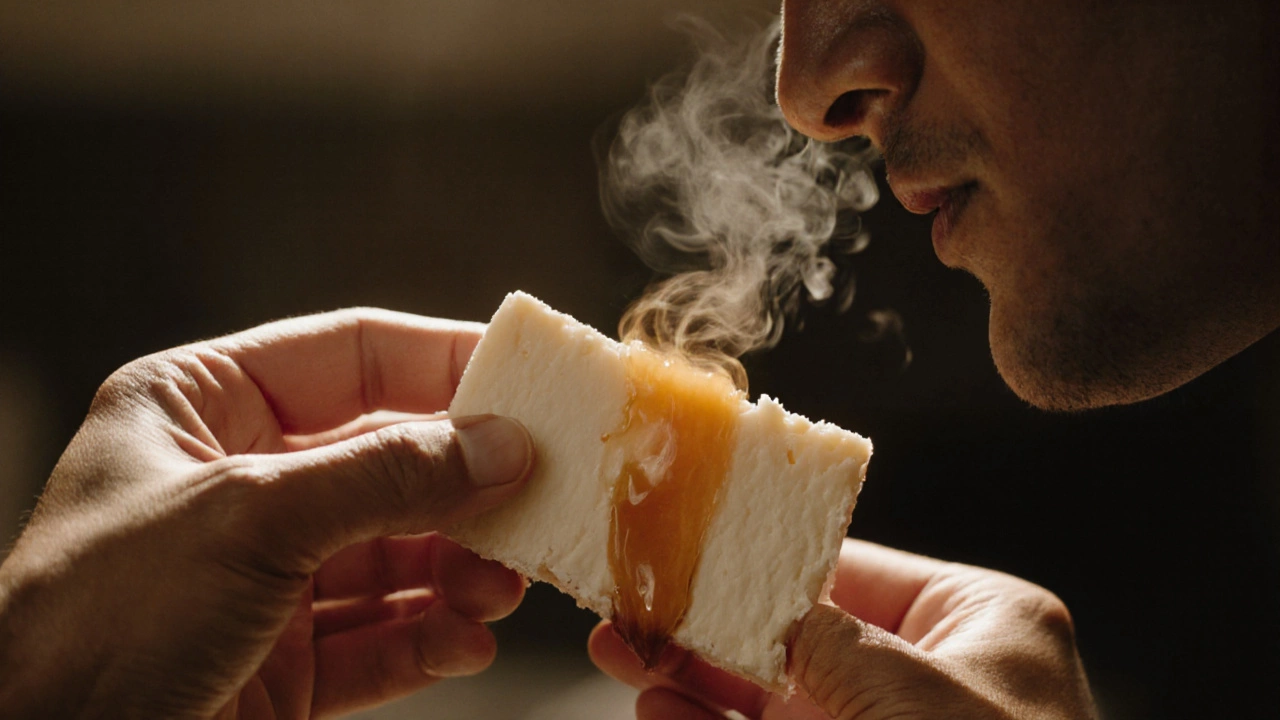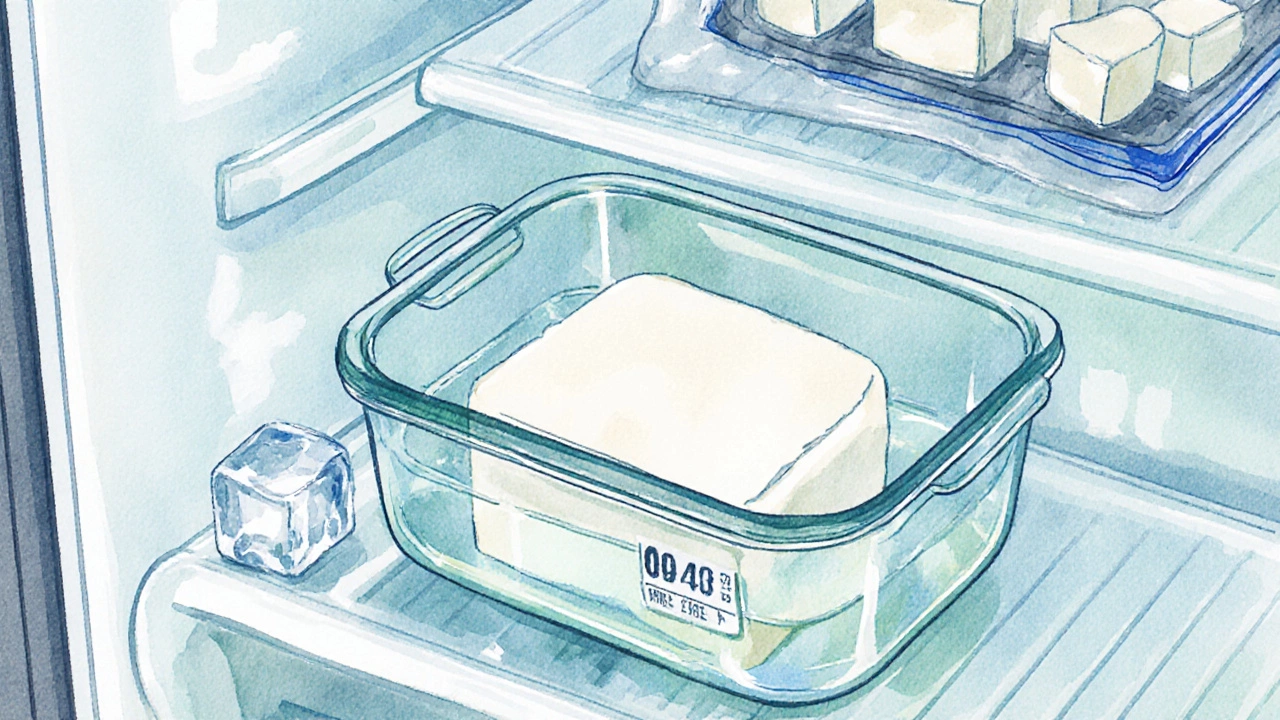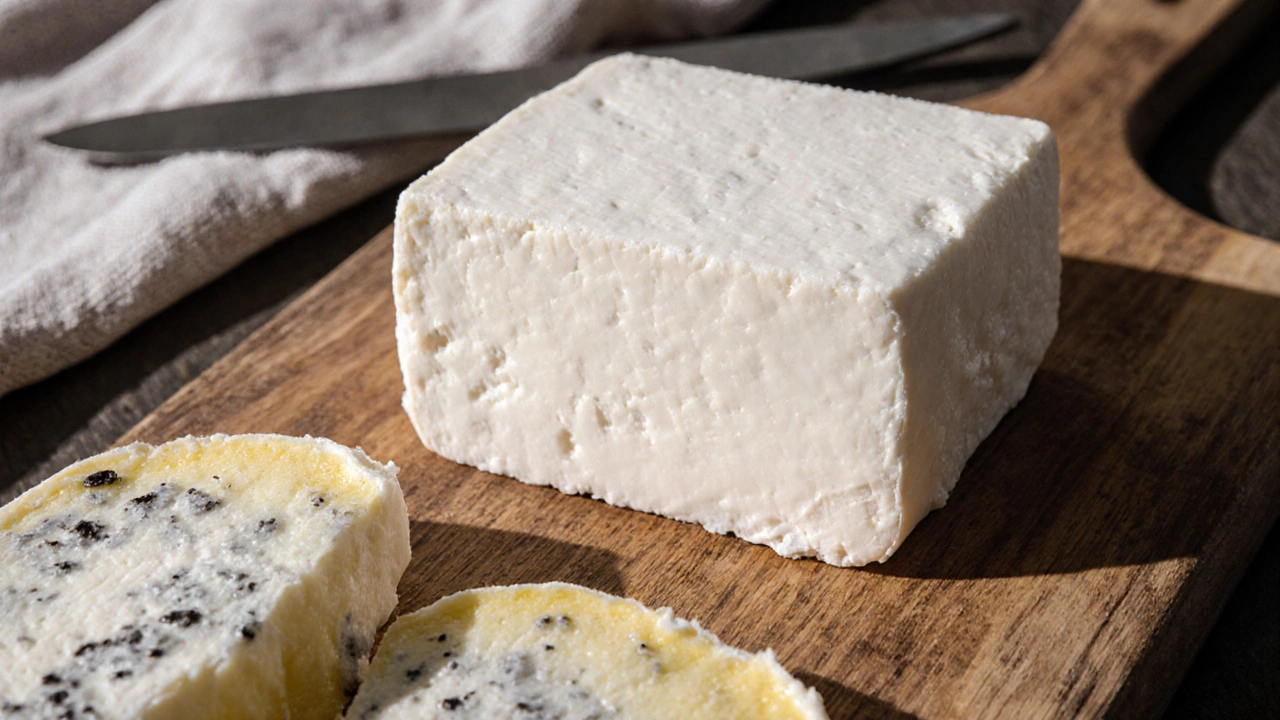Paneer Spoilage Checker
Check Your Paneer
Select all symptoms you observe. This tool uses professional food safety guidelines to determine if your paneer is safe to eat.
Spotting a spoiled paneer before you toss it can save you a stomach ache and keep your meals tasty. Below you’ll find quick visual, smell and touch cues, plus storage tricks to keep your fresh cheese at its best.
Key Takeaways
- Fresh paneer should be white, firm, and have a mild milky aroma.
- Any off‑color, sour smell, slimy texture, or visible mold means it’s gone bad.
- Store paneer in a clean airtight container at 1‑4°C (34‑39°F) and use it within 5‑7days of opening.
- If you’re ever in doubt, discard it - the risk of food‑borne illness isn’t worth a second guess.
What Is Paneer?
Paneer is a fresh, non‑aged cheese made by curdling milk with an acid such as lemon juice or vinegar. It’s popular in Indian cooking because it holds its shape when cooked. Unlike aged cheeses, paneer contains little to no lactose and no added bacterial cultures, which means it’s relatively low‑risk but still vulnerable to spoilage if not handled right.
Why Paneer Can Go Bad
Even though paneer doesn’t undergo fermentation, the milk proteins and moisture create a perfect breeding ground for bacterial growth especially psychrotrophic bacteria that multiply at refrigeration temperatures.. When the temperature rises or the cheese sits too long, these microbes produce acids, gases, and enzymes that change the cheese’s texture, color, and smell. Mold can also appear on the surface if the cheese is exposed to airborne spores. Both pathways can lead to food‑borne illness if consumed.

Visual Clues: Color and Texture
Fresh paneer is uniformly white or ivory. Look for these warning signs:
- Yellow or gray patches - oxidation or early mold growth.
- Dark spots - possible bacterial colonies.
- Slimy, gelatinous surface - excess moisture and microbial activity.
- Crumbly or overly dry texture - dehydration, often a sign it’s past its prime.
If any of these appear, discard the batch.
Smell Test: Odor Indicators
A good paneer smells faintly milky or neutral. Bad paneer can emit:
- Sharp, sour aroma similar to spoiled yogurt.
- Rancid, buttery whiff indicating fat oxidation.
- Musty or earthy scent typical of mold.
When you catch a whiff that makes you pause, it’s safer to toss it.
Touch and Taste Checks (Use Caution)
Gently press the cheese with a clean finger. Fresh paneer feels firm yet slightly springy. If it feels sticky, overly soft, or leaves a residue, it’s likely compromised.
Only as a last resort, you can taste a tiny piece. A sour, bitter, or off‑flavor is a clear sign of spoilage. Remember, tasting spoiled dairy carries a risk, so limit it to a minuscule amount and spit it out immediately.
Common Types of Spoilage: Mold vs Bacterial
| Aspect | Fresh Paneer | Spoiled Paneer |
|---|---|---|
| Color | Uniform white/cream | Yellowish, gray, or dark spots |
| Texture | Firm, slightly springy | Slimy, overly soft, or crumbly |
| Smell | Mild milky | Sour, rancid, musty |
| Presence of growth | None | Visible mold or fuzzy patches |
| Taste (if sampled) | Neutral, milky | Sour, bitter, off‑flavor |

How to Store Paneer Properly
Good storage dramatically extends paneer’s shelf life. Follow these steps:
- Transfer paneer to a clean, airtight container as soon as you bring it home.
- Cover the cheese with a thin layer of fresh water or whey; this keeps it moist without encouraging mold.
- Label the container with the purchase or opening date.
- Place the container in the coldest part of the fridge (usually the bottom shelf) where the temperature stays between 1‑4°C (34‑39°F).
- Change the water daily if you use the wet‑storage method.
For longer storage, paneer freezes well. Cut it into cubes, spread on a tray, freeze solid, then transfer to a zip‑lock bag. Use within 2‑3 months, and thaw in the refrigerator before cooking.
What to Do If You Suspect Spoilage
When in doubt, throw it out. Here’s a quick decision flow:
- Check the date - if past the “use‑by” date, discard.
- Inspect visually and smell - any off‑color or sour odor? Toss.
- Touch test - sticky or slimy? Toss.
- If only a small area shows mold, you might think of cutting it off, but with fresh cheeses like paneer the safest call is to discard the whole batch.
Remember, food‑borne bacteria such as Salmonella can cause severe gastrointestinal illness even in low quantities. Better safe than sorry.
Quick Safety Checklist
- Store at 1‑4°C, airtight.
- Use within 5‑7days of opening (or freeze).
- Look for color changes, mold, or slime.
- Smell for sour or rancid notes.
- When in doubt, discard.
Frequently Asked Questions
Can I eat paneer that has a tiny white crust on the surface?
A thin white crust usually means the cheese is drying out, not that it’s unsafe. If the texture is still firm and there’s no sour smell, you can trim the dry layer and use the rest. However, if the crust is accompanied by any discoloration or odor, discard it.
Does cooking spoiled paneer make it safe?
No. Heat may kill some bacteria but won’t remove toxins already produced or eliminate mold spores. The taste and texture will still be off, and the health risk remains.
How long does paneer stay fresh in the fridge after opening?
Typically 5‑7days if kept in an airtight container with fresh water. If you notice any signs of spoilage earlier, discard it.
Is it okay to freeze paneer that’s already a few days old?
Yes, you can freeze paneer up to about a week old, but be extra vigilant about smell and texture before freezing. Once thawed, use it promptly and do not refreeze.
What temperature should my fridge be for optimal paneer storage?
Aim for 1‑4°C (34‑39°F). Anything warmer speeds up bacterial growth, while a colder setting (close to 0°C) can cause the cheese to become too hard.
